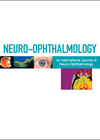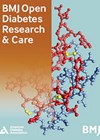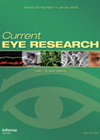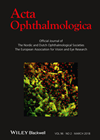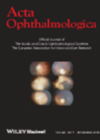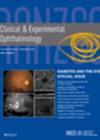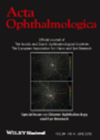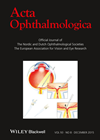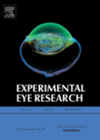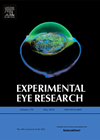
Journal Reviews
Relationship between diabetic retinopathy and cerebrovascular reactivity changes
Cerebral micro-angiopathy caused by diabetes can manifest itself as an impairment in cerebrovascular reactivity. Transcranial doppler ultrasound (TCD) is a cost-effective and non-invasive way to measure the cerebrovascular reactivity. This study aimed to assess the relationship between the grade of...
A scoping review of artificial intelligence tools for diabetic retinopathy in low- and middle-income countries
The authors conducted a scoping review to summarise the literature relating to artificial intelligence (AI) tools for diabetic retinopathy (DR) in low- and middle-income countries (LMICs). Eighty-one studies were included, following a comprehensive literature search. The majority of studies were...
Effect of heredity on risk of diabetic retinopathy
This study used survival analysis on 2199 patients who had reached vision-threatening diabetic retinopathy to investigate the contribution of heredity to diabetes together with other known risk factors for the development of either proliferative diabetic retinopathy (PDR) or diabetic macular...
Inflammation and microvascular changes in diabetic retinopathy
Studies have shown that neurodegeneration and inflammation in the retina start early in diabetic retinopathy (DR) and can be present before the latter is clinically evident. The aim of this retrospective review of 99 diabetic patients was to evaluate retinal...
Control of bleeding with diabetic vitrectomy under air
The authors describe a modified diabetic vitrectomy using continuous air infusion in diabetic eyes with severe fibrovascular proliferation. In their case series of 25 eyes (20 patients), intravitreal bevacizumab (1.25mg) was used one week prior to surgery. Fifteen eyes had...
Automated grading of diabetic retinopathy: is it possible?
Diabetic retinopathy (DR) is a frequent microvascular complication of diabetes and a leading cause of blindness worldwide. However, much of this diabetic blindness can be delayed or even prevented with timely diagnosis and proper treatment. For this reason, regular screening...
Changes in parafoveal retinal thickness after bariatric surgery in type 2 diabetics
Bariatric surgery induces an instant normalisation of blood glucose in as many as 80% of patients with type 2 diabetes. It has been previously reported that diabetic retinopathy (DR) is stable within one year after bariatric surgery. In this study,...
Retinal ganglion cell loss in diabetes and diabetic retinopathy
The aim of this observational case control study was to evaluate the association of diabetes and diabetic retinopathy (DR) with retinal ganglion cell loss. Cases were Chinese patients with type 2 diabetes with and without DR, aged 40-80 years. Eligible...
Myopia-protective against diabetic retinopathy
This meta-analysis evaluates the current evidence of the relationship between myopia and diabetic retinopathy (DR) risk. A systematic search was performed up to April 2015. Three models were used to assess the association between myopia and risk of DR: axial...
Diabetic polyneuropathy and risk of developing diabetic retinopathy
Diabetic polyneuropathy (DPN), diabetic retinopathy (DR) and diabetic nephropathy are widely classified as microvascular complications of diabetes. DPN, which may cause complete sensation loss, is another common complication of DM. The DPN-related diminished sensation presents a significant risk factor for...
Akimba mice, a model of human diabetic retinopathy
Diabetic retinopathy (DR) is a major complication of diabetes and a growing problem as the systemic disease becomes more prevalent. DR develops insidiously from an asymptomatic form through to vascular damage that leads to oedema and breakdown of the blood-retinal...
New mouse model of diabetes mellitus
Diabetic retinopathy (DR) is a serious complication of diabetes. It is driven by the loss of pericytes, cells which control vascular function, due to excess formation of sugar alcohols by the enzyme aldose reductase (AR). AR has been shown to...

